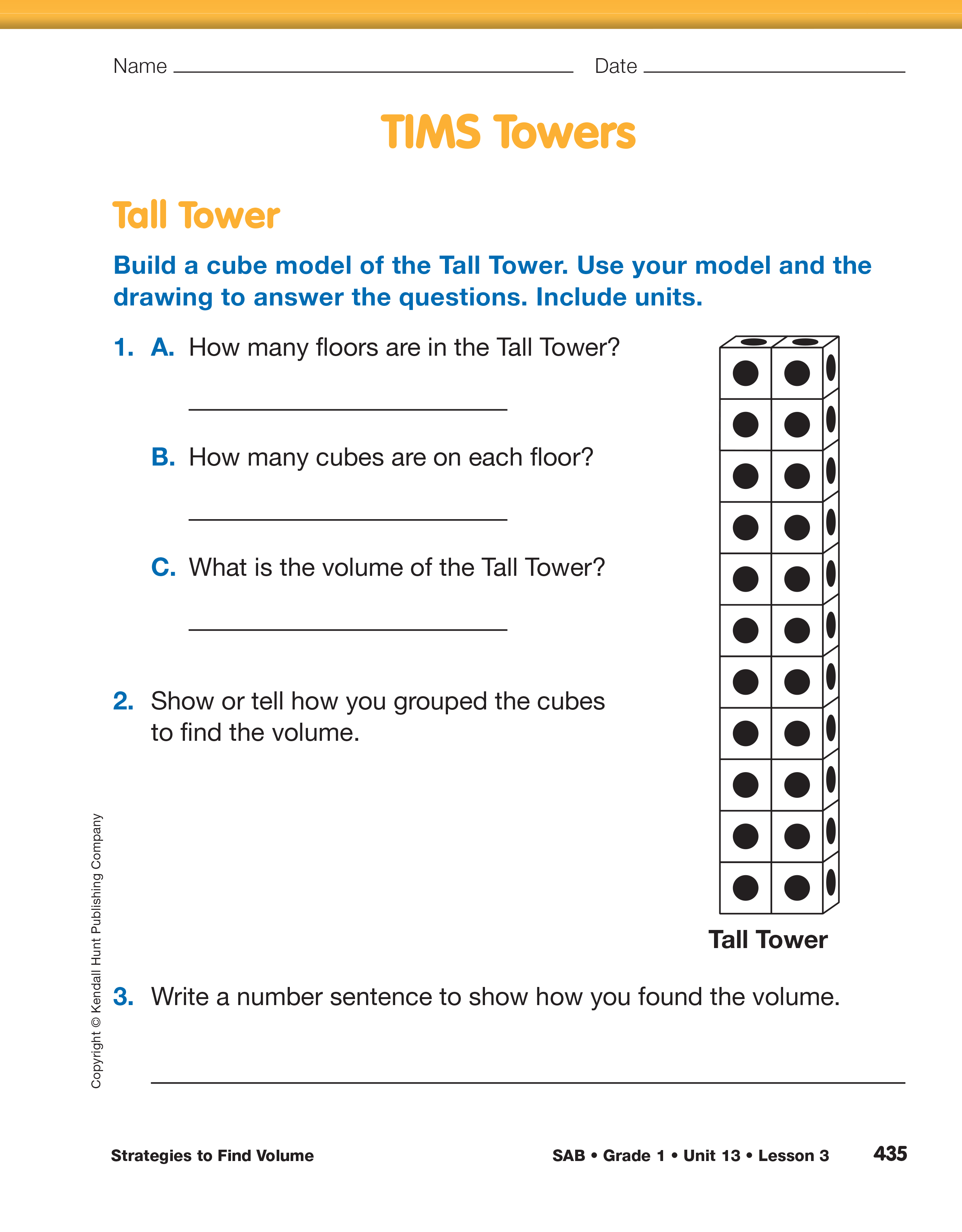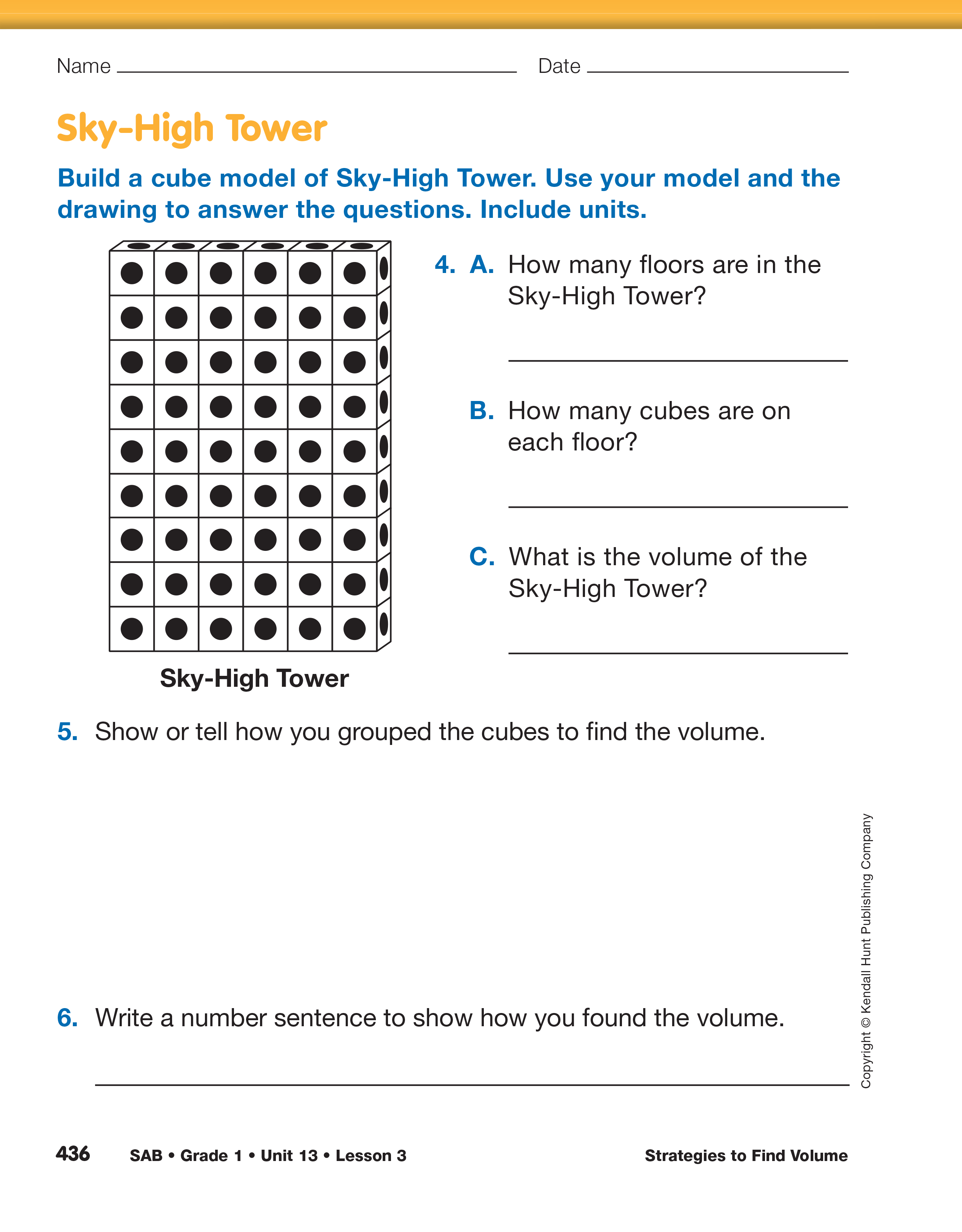Strategies to Find Volume
Est. Class Sessions: 2Developing the Lesson
Part 1: Cube Models with All Cubes Visible
Find Strategies for Tall Tower.
Students work with
a partner to complete this lesson. Each student pair
will need
60 connecting cubes.
Display the TIMS Towers 1 Master and ask:
Direct students to the TIMS Towers pages in the Student Activity Book. Ask students to work with their partner to complete Questions 1–3. For Question 1, students are asked to build a cube model of the Tall Tower and to record the floors, number of cubes on each floor, and volume for this building. Ask students to think about ways they can group the cubes and use addition strategies to find the volume rather than counting each cube by ones.
As students work, use these or similar discussion prompts to guide them:
After most students have finished Questions 1–3, display the Tall Tower Volume chart created before the lesson. See Materials Preparation.
Use this chart to record student responses to the following prompts:
Encourage students to share their solution paths. As students share ways the cubes can be grouped and counted, write the different ideas on the chart. Some possible strategies include:
- Grouping by floors and skip counting by twos from two to twenty-two.
- Grouping by columns and doubling eleven.
- Grouping by columns by doubling ten and counting on two more.
Find Strategy for Sky-High Tower. Direct students to the Sky-High Tower section on the TIMS Towers pages. Students work with their partner to complete Questions 4–6. To complete these questions, students replicate the work they did to find the volume of the Tall Tower for Sky-High Tower. Display the Sky-High Tower Volume chart. Ask students to share the strategies and number sentences they used to find the volume of Sky-High Tower as you record them on the chart. Since they have never skip counted by either 6s or 9s, students may want to count the cubes in this tower by ones.
Encourage them to look for and share more efficient ways to count, such as partitioning each row of 6 into 5 + 1. They can then skip count by fives and count on by ones (5, 10, 15, 20, 25, 30, 35, 40, 45, 46, 47, 48, 49, 50, 51, 52, 53, 54). Students can also use their 100 Chart in the Reference section of the Student Activity Book. Students can think of each column of nine in the Sky-High Tower as 10 – 1. They can then use the 100 Chart to count by 10s and then count back 6 (10, 20, 30, 40, 50, 60, 59, 58, 57, 56, 55, 54). Continue to share strategies until someone suggests using the calculator to repeatedly add 6 or 9. Ask all students to work with their partner and use their calculator to find the volume of Sky-High Tower. One student should key in the number 6 or 9, while the other keeps track of how many times it is added. Students can then change roles and use the calculator to find the volume using the other number.
Assign the Two Towers Homework Master.
















